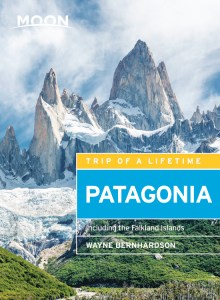Chile
These free, printable travel maps of Chile are divided into eight regions:
- Santiago and Vicinity
- The Chilean Heartland
- Norte Grande
- Norte Chico
- The Chilean Lakes District
- Aisen and Continental Chiloe
- Magallanes and Tierra del Fuego
- The Chilean Pacific Islands
Explore Chile with these helpful travel maps. Ensure you have the newest travel maps from Moon by ordering the most recent edition of our travel guides to Chile and Patagonia.
Santiago and Vicinity
Chile’s capital is an underrated metropolis of quality museums, lively neighborhoods and nightlife, and outstanding restaurants. Vineyards in the vicinity complement its gastronomic progressivism, and a high wild backcountry offers white-water rafting and kayaking and major ski resorts, barely an hour away.





The Chilean Heartland
Nearly surrounding Santiago, the heartland stretches from the Río Aconcagua south to the Biobío. A transect would pass from its rugged coastline over the rounded coastal range and through the alluvial central valley to the andean heights.
Northwest of Santiago, the hillsides and winding alleyways of Valparaíso offer one of the continent’s greatest urban experiences. Nearby, beach resorts cluster around Viña del Mar, and unassuming Pichilemu has become one of South America’s top surf spots. Several river valleys have become well-traveled wine routes for visitors from around the world.




Norte Grande
Chile’s “Great North” comprises the arid Atacama coast, precordillera “foothills” reaching nearly 4,000 meters, and the altiplano, punctuated with volcanoes that soar to over 6,000 meters.
Most of the population lives in coastal cities like arica and Iquique, and oases like tourist-magnet colonial village san Pedro de atacama. This is a change from a century ago, when many lived in nitrate company towns (oficinas) that are now ghost towns. Footprints also remain from pre-Columbian times, when the population clustered in coastal fish camps, farmed the valleys, and tended llamas and alpacas in the altiplano (which some still do).





Norte Chico
The semi-arid region north of Santiago has some of Chile’s best beaches, a scenic shoreline with abundant wildlife, and skies so clear that international astronomical organizations have built observatories on their fog-free heights. Foreign visitors to this region are few, but the open-minded come away satisfied and often thrilled.



The Chilean Lakes District
Known popularly but imprecisely as Chile’s “Lakes District,” south of the Río Biobío, the Sur Chico (“Lesser South”) is a wonderland of rivers, lakes, forests, and volcanoes, and the homeland of the Mapuche Indians. Within this vernacular region lies the Chiloé archipelago, a UNESCO World Heritage site rich in scenery, architecturally distinctive homes and churches, and extravagant folklore.
The Sur Chico is popular with Chilean and foreign visitors alike, and it’s common to cross the Andes into Argentine Patagonia here. It’s also the official starting point for the Carretera austral, the discontinuous southern highway that’s linked previously inaccessible parts of southern Chile to the mainland, and for the ferries whose services help fill the gaps.








Aisen and Continental Chiloe
Chile’s most thinly populated region, Aisén (Region XI, formally speaking) is islands-and-highlands country that resembles British Columbia and the Alaska panhandle. For purposes of these maps, it also includes the southernmost part of Los Lagos (Region X), often known as “continental Chiloé,” where the tiny ferry port of Caleta Gonzalo is the de facto starting point of the Carretera Austral.
The Carretera austral is Patagonia’s greatest road trip, but off-the-highway sights like Laguna san rafael (accessible by boat or air taxi) are highlights in their own right. There are numerous national parks and reserves along or near the highway, and Parque Pumalín and Valle Chacabuco may be South America’s most audacious private conservation initiatives.


Magallanes and Tierra del Fuego
South of Aisén, Chilean Patagonia consists of jagged, forested mountains and uninhabited islands bordering inland seas battered by Pacific storms. Rain and snow feed surging rivers and the sprawling glaciers of the Campo de hielo sur, the southern continental ice field.
The major city is the regional capital of Punta arenas, while Puerto natales is the gateway to the igneous spires of Torres del Paine. Across the Strait of Magellan, Chile and Argentina share the broad steppes and mountainous grandeur of Tierra del Fuego, where Ushuaia is the world’s southernmost city.






The Chilean Pacific Islands
It’s hard to imagine destinations more exotic than Easter Island, whose enigmatic stone statues are instantly recognizable anywhere in the world, or more romantic than the Juan Fernández archipelago, a World Biosphere Reserve that also gave literature the Robinson Crusoe story. Both islands are small, dormant volcanoes that have risen out of the ocean.
Easter Island remains an open-air archaeological wonderland that tenuously blends Polynesian culture with the South American continent.
Castaway Alexander Selkirk’s lonely exile, fictionalized by Daniel Defoe, put Juan Fernández on the map, but its unique flora and fauna are equally noteworthy.


